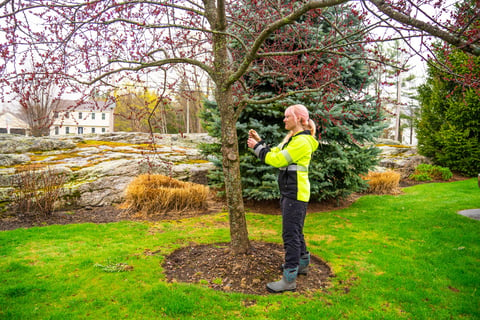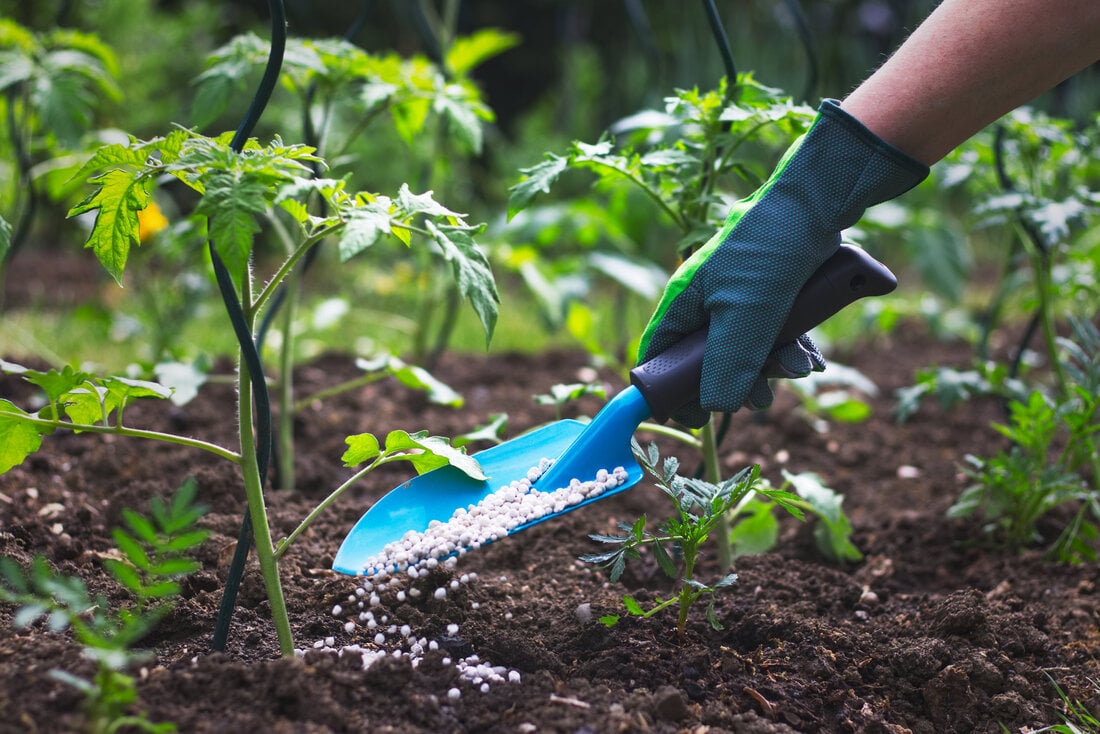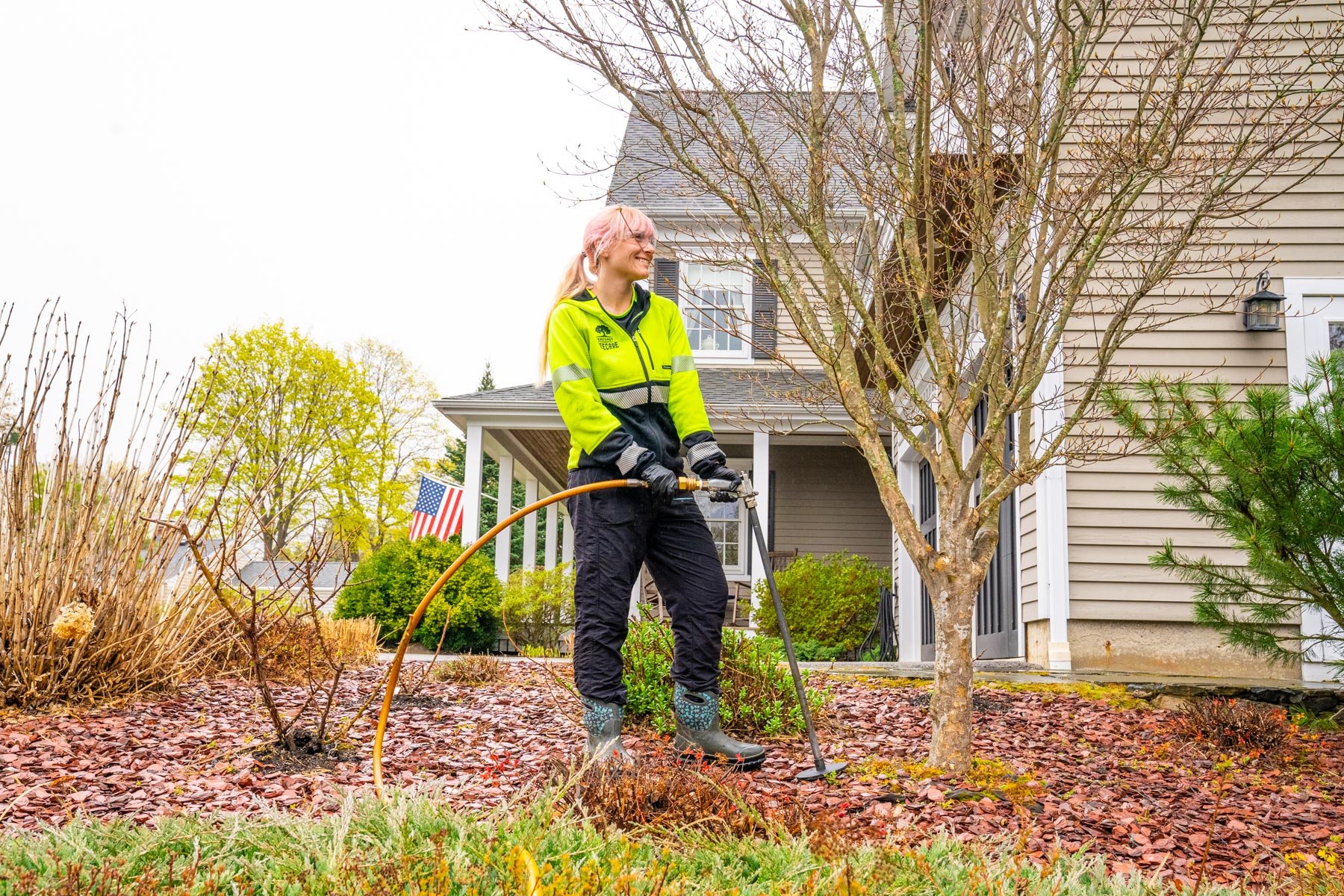


Trees and shrubs growing in the suburban landscape require tree and shrub fertilizer to perform their best. Although homeowners sometimes think that trees and shrubs are self-sustaining once in the ground, this isn’t the case.
Trees and shrubs on a residential property won’t get the same nutrients that would be readily available in the forest which is why tree and shrub fertilization in New England is so important.
Of course, the type of fertilizer that you’re using (and how it’s applied) can make all the difference.
You want to make sure you’re using the best fertilizer for trees and shrubs if you want to get the best results. Though lots of these products are readily available at the local hardware store, the truth is, the best tree and shrub fertilizer is not going to be a store-bought product. Even so, there are some very popular tree and shrub fertilizer products sold regularly including:
The following products are some of the more popular tree and shrub fertilizers on the market. Chances are that you’ve seen these yourself.

One thing that you will notice on tree and shrub fertilization products is that they have an N-P-K ratio listed. This stands for: Nitrogen (N), Phosphorous (P), and Potassium (K). Each plays a different role in plant growth.
Nitrogen (N): Nitrogen is vital for the growth, development, and reproduction of plants. It is the main component of chlorophyll, the compound the plant uses to convert sunlight into energy.
Phosphorus (P): Phosphorus is essential for photosynthesis and cell growth. It encourages good blooming and root development.
Potassium (K): Potassium regulates photosynthesis and boosts the resistance to disease.
With that in mind, here are five popular tree and shrub fertilizers.
These sticks release fertilizer slowly. They are shaped in the form of a spike, and all you have to do is insert them in the ground where needed and cover them with soil. They are suitable for oak, dogwood, elm, birch, maple, and poplar
This is a similar product but with a different ratio of N-P-K. These sticks are suitable for oak, pine, poplar birch, elm, dogwood, and shrubs. These spikes are suitable for 1-2 inch trunk diameter or shrub 3 ft in height.
These spikes come in the 15-5-10 NPK formulation. They release nutrients to the roots for lush foliage on all deciduous, evergreen, and flowering trees and shrubs. You can use them to fertilize once in the spring and once in the fall. It offers high levels of nitrogen for vigorous growth and sufficient potassium for good fruits.
This is a slow-release organic plant food that is natural and organic. The N-P-K 6-3-2 formulation helps deliver good results. It is suitable for use as an apple, pear, and cherry tree fertilizer and for use with chestnut, walnut, willow, and cypress trees.
With its 15-9-12 nutrient mix, it is a popular general-purpose fertilizer. A small linseed ball outer shell houses the mix and then coated with a slow dissolving formula to offer Osmocotes slow-release technology. It is suitable for trees and shrubs in containers or pots, including indoor plants and ferns.
While there is no question that the above products are top sellers, this does not make them the best tree and shrub fertilizer options for your landscape.
Store-bought products simply can’t stand up to what a professional is using. If you want to take the worries out of your hands and also get better results, this is a service that is best left to a pro.

For one, the commercial-grade fertilization products used by a pro are more likely going to be better quality.
But it’s also a matter of how much fertilizer is actually contained in those spikes. It’s a miniscule amount compared to what can be delivered by a professional performing deep root fertilization services. Tree spikes are also only going a short way into the soil. This doesn’t allow them to reach down to the root zone where the nutrients are actually needed. While this might be okay for smaller shrubs it’s certainly not going to be very helpful as you get into mid-size to larger trees.
The shallow application method and the quality of the products simply aren’t going to match what can be offered by professional providers of tree care in New England.
There are a lot of important benefits when you fertilize your trees and shrubs. They can grow larger, produce more profuse blooms, and can be healthier. But you won’t get these benefits if you end up with subpar fertilization products.
While it might be tempting to purchase one of these five popular tree and shrub fertilizer products (or others you’ve seen), we think that you won’t be happy in the end. Although tree spikes are inexpensive, they will not deliver the value and results that you desire.
If you truly care about getting the most out of your investment, you want to consider working with a professional.
At Seacoast Tree Care, tree and shrub fertilization is part of our Plant Health Care program. We use organic fertilizers to help create a more favorable environment for your trees and shrubs to grow in. This can help result in some of the benefits discussed above.
Ultimately, by investing in these services, you are doing your part to protect your local ecosystem. Your trees and shrubs are a valuable asset and you want to do what you can to keep them healthy.
Ready for healthier trees at your Southern NH, ME, or MA home? Request your consultation and have your New England trees evaluated. By making a wise choice, you’ll know your trees are in good hands.